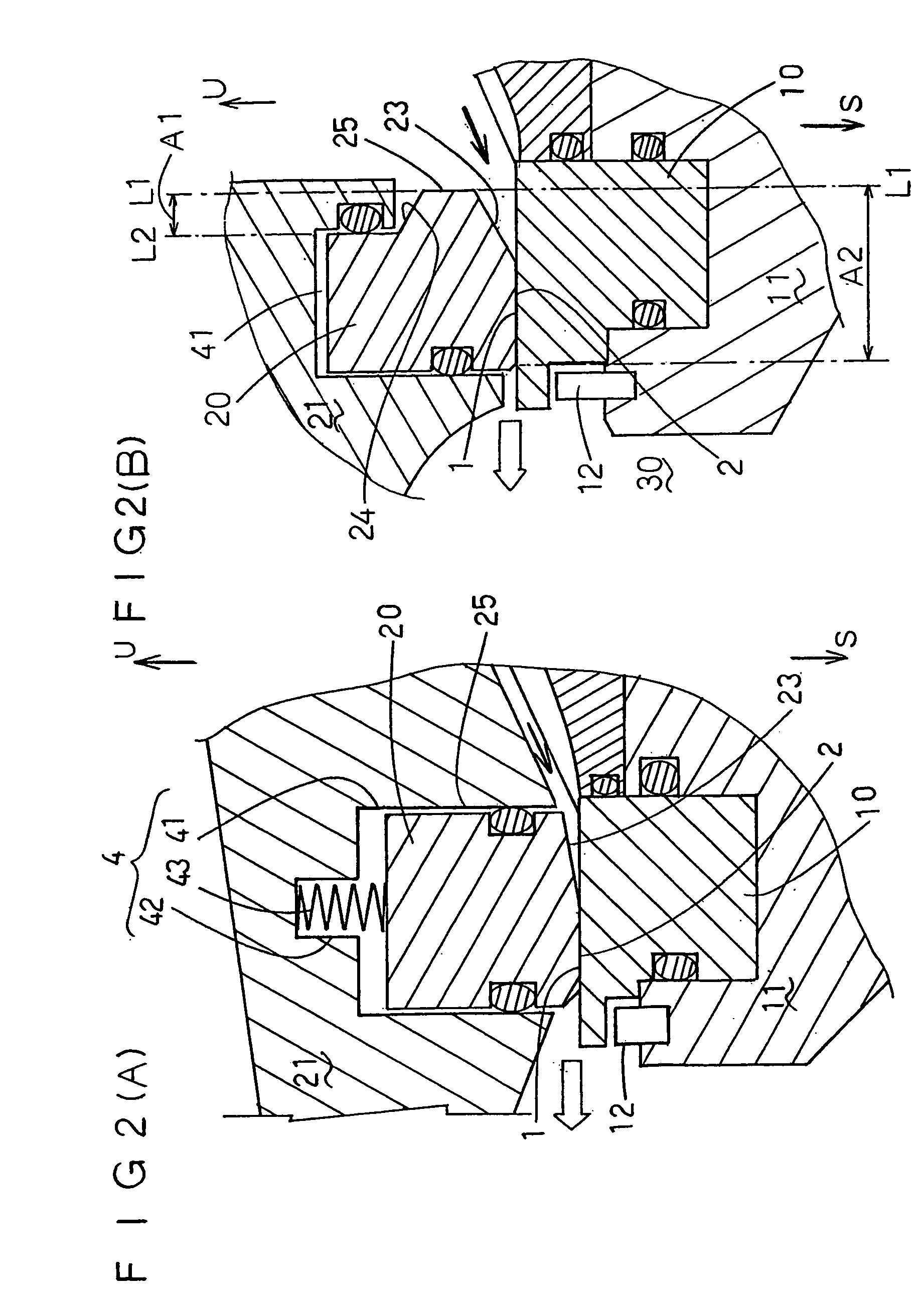Processing apparatus and method for fluid, and deaerator therewith
a technology of processing apparatus and fluid, which is applied in the direction of gas current separation, way, centrifugal wheel fertiliser, etc., can solve the problems of only being able to adjust the apparatus, reducing the dispersible range of viscosity of the fluid to be processed, and entanglement of the process process, etc., to achieve simple structure and high productivity rate
- Summary
- Abstract
- Description
- Claims
- Application Information
AI Technical Summary
Benefits of technology
Problems solved by technology
Method used
Image
Examples
Embodiment Construction
[0121]The embodiments of the present invention will be described with reference to the drawings.
[0122]FIGS. 1 and 2(A) illustrate one embodiment of the present invention. FIG. 1 is a partially cutaway longitudinal sectional view of an atomizing apparatus G of a deaerator in accordance with the present invention. FIG. 2(A) is a longitudinal sectional view showing the main part of the deaerator as per FIG. 1.
[0123]For the convenience of explanation, an arrow U indicates the upward direction, and S the downward direction in the drawings.
[0124]First, the explanation will be made of the construction of the deaerator.
[0125]The deaerator comprises an atomizing apparatus G, and a known decompressing device (not shown in this embodiment) such as vacuum pump.
[0126]Said atomizing apparatus G is proper for atomizing operation of the order of microns to nanometers, specifically for the deaerating process for the removed (extracted) components from a single liquid, liquids, liquid and solid (powd...
PUM
 Login to View More
Login to View More Abstract
Description
Claims
Application Information
 Login to View More
Login to View More - R&D
- Intellectual Property
- Life Sciences
- Materials
- Tech Scout
- Unparalleled Data Quality
- Higher Quality Content
- 60% Fewer Hallucinations
Browse by: Latest US Patents, China's latest patents, Technical Efficacy Thesaurus, Application Domain, Technology Topic, Popular Technical Reports.
© 2025 PatSnap. All rights reserved.Legal|Privacy policy|Modern Slavery Act Transparency Statement|Sitemap|About US| Contact US: help@patsnap.com



